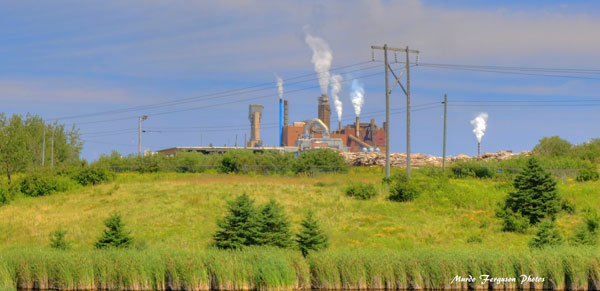
News
Pulp
Water & Chemicals
Pipe used by Northern Pulp to remain in Boat Harbour until April
January 22, 2020 By P&PC Staff
 Northern Pulp. Photo: © Murdo Ferguson/Paper Excellence
Northern Pulp. Photo: © Murdo Ferguson/Paper Excellence The wastewater drainage pipe that Northern Pulp uses for its effluent will remain in Boat Harbour until April, Nova Scotia Premier Stephen McNeil announced yesterday.
At a Jan. 21 news conference, McNeil said it will take a few months to disconnect the province-owned pipe after the mill’s closure on Jan. 31.
While mill operations will cease Jan. 31 and no longer produce effluent, there will still be water moving through the pipe until it is disconnected.
With Northern Pulp’s parent company, Paper Excellence, committed to resubmitting its environmental assessment for a replacement wastewater treatment facility, the mill must be winterized to maintain its equipment.
In order to prevent the mill’s pipe from freezing during winterization, the mill must be heated via the power boiler.
Water used for that process will continue to empty into Boat Harbour along with any effluent still needing to be flushed from the pipe.
While the water for the boiler does not contain chemicals used for kraft pulping, it’s still considered effluent by federal pulp and paper rules.
McNeil said that discharged water will be dredged and sealed in a containment cell before environmental cleanup begins.
He said allowing the pipes to be heated will prevent them bursting when the weather warms up, mitigating a further environmental issue.
In a statement, Pictou Landing First Nation Chief Andrea Paul expressed disappointment about the delay, indicating the community was under the impression the pipe was to be removed Jan. 31.
Nova Scotia passed the Boat Harbour Act in 2015, legislating that Northern Pulp’s bleached kraft pulp mill would stop using the drainage pipe by Jan. 31, 2020, which deposits untreated effluent into lagoons adjacent to Pictou Landing First Nation.
The mill’s proposed replacement facility has not yet been approved by the province.
It would use the AnoxKaldnes BAS (Biological Activated Sludge) process from Veolia Water Technologies, which combines Moving Bed Biofilm Reactor (MBBR) technology with conventional activated sludge.
Print this page